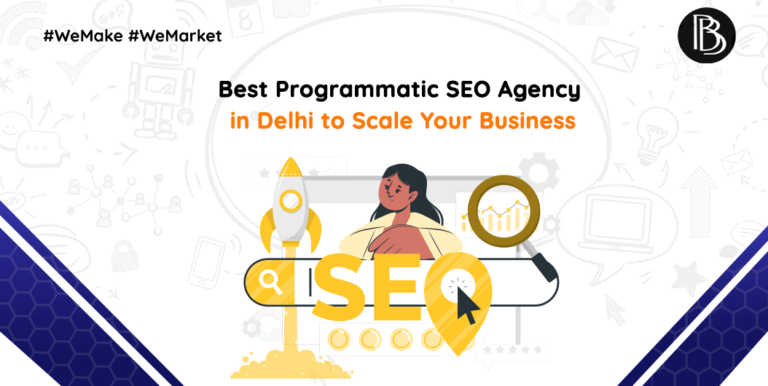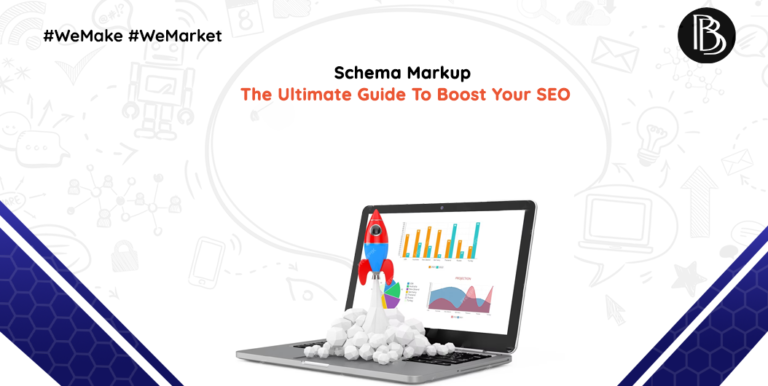The Complete E-commerce Website Handbook for Business Owners
In today’s digital age, having an e-commerce website is no longer optional—it’s essential. Whether you’re a small business owner or an entrepreneur launching a new brand, an online store can help you reach a global audience, boost sales, and grow your business. But with the e-commerce landscape evolving rapidly, staying ahead requires more than just a basic website. By 2025, emerging technologies and shifting consumer behaviors will redefine how businesses operate online.
Imagine a world where AI personalizes every shopping experience, voice assistants handle purchases, and augmented reality lets customers “try before they buy.” Sustainability will drive purchasing decisions, and social media will become a primary shopping channel. To thrive in this future, your e-commerce website must be adaptable, innovative, and customer-centric.
This comprehensive guide will walk you through everything you need to know—from planning and designing your website to optimizing it for SEO and scaling it for growth. Whether you’re starting from scratch or upgrading an existing store, these insights will help you build a successful e-commerce business ready for 2025 and beyond. Let’s get started!
1. Planning Your E-commerce Website
1.1 Defining Your Business Goals
Before you dive into building your e-commerce site, take a step back. What’s your main goal? Do you want to boost sales, grow brand awareness, or expand into new markets? Getting clear on your objectives will shape every decision you make.
1.2 Choosing the Right E-commerce Platform
Not all platforms are created equal. Pick one that grows with your business:
- Shopify – Shopify is an excellent choice for startups that value simplicity and speed. It offers easy setup and management, making it ideal for those new to online selling.
- WooCommerce (WordPress) – WooCommerce, built for WordPress, gives businesses a chance to customize every aspect of their store. It suits those who want control over design and features.
- BigCommerce – BigCommerce shines when it comes to rapid growth; it offers powerful tools for larger inventory and enterprise-level operations.
- Magento – Best for enterprise-level e-commerce with advanced features. This option is suitable for established businesses ready to manage large catalogs and custom solutions.
1.3 Designing a Website That Converts in 2025
Forget generic templates. Your website must be mobile-first, visually bold, and frictionless:
- Mobile-Friendly Design: Over 70% of e-commerce traffic comes from mobile. Use tools like Google’s Mobile-Friendly Test to ensure responsiveness.
- Minimalist Layouts: Reduce clutter. Highlight products with high-resolution images and whitespace.
- Branding and Visual Identity: Your website should reflect your brand’s personality. Use consistent colors, fonts, and imagery across all pages to build trust and recognition.
- Speed Matters: Aim for a load time under 2 seconds. Use platforms like Cloudflare or Bit Binders speed optimization services to achieve this.
Standout Feature: Integrate AR/VR previews (e.g., 3D product spins) to mimic in-store experiences.
2. Building Your E-commerce Website
2.1. Essential Pages & Sections
Your website needs these non-negotiable pages to build trust and drive sales:
- Homepage: Showcase bestsellers, promotions, and brand ethos in 5 seconds or less.
- Product Pages: Include high-res images, videos, sizing guides, and FAQs.
- About Us: Humanize your brand. Share your mission and sustainability practices.
- Checkout Page: Offer guest checkout, multiple payment options (see below), and free shipping calls-to-action.
- Blog/Resources: Position yourself as an industry expert (e.g., “2025 Fitness Trends” for a sportswear brand).
Missing These? Bit Binders web audit service identifies gaps hurting your credibility.
3.2 Content That Sells: Product Headings & Descriptions
Generic descriptions won’t cut it. Here’s how to write copy that converts:
- Product Headings: Use keywords + benefits.
Bad: “Blue Running Shoes”
Good: “Breathable Trail Running Shoes – Lightweight for Long-Distance Comfort (2025 Model)” - Descriptions: Focus on outcomes, not features.
Example: “Stay cool on rugged trails with moisture-wicking fabric and ergonomic soles designed for 2025’s toughest terrains.” - Bit Binders Content Formula: We combine SEO keywords with storytelling to boost conversions by 40% for our clients.
2.3 Payment Methods That Build Trust
Diversify options to reduce cart abandonment:
- Global Gateways: PayPal, Apple Pay, Google Pay.
- Localized Options: Offer COD (cash on delivery) or regional wallets like BHIM or Paytm.
- Security: Display SSL certificates and PCI compliance badges.
Bit Binders Insight: Sites with 3+ payment options see 30% higher checkout completion rates.
3. Optimizing Your E-commerce Website
3.1 SEO for E-commerce Websites
Optimize your website for search engines by:
- Conducting Keyword Research: To improve your website’s visibility in search engines, start with thorough keyword research. Find out the words and phrases that your possible customers are using. Focus on both short-tail and long-tail keywords to cover a wide range of search queries.
- Meta Descriptions and Alt Text: Ensure your meta descriptions are clear and compelling, as these snippets help users decide whether to click on your link in search results. Don’t forget to write alt text for images; this helps search engines understand what your images depict and improves accessibility for all users.
- Creating SEO-friendly URLs: Create SEO-friendly URLs. Keep them concise, relevant, and easy to read. Use short numbers and avoid extra characters.
3.2 Speed and Performance Optimization
Slow-loading websites can drive customers away. Use tools like GTmetrix and PageSpeed Insights to improve your site’s performance. Fast-loading pages not only keep customers engaged but also improve your search engine ranking.
3.3 User Experience (UX) Best Practices
Making the checkout process easier can greatly lower the number of people who leave their carts. Streamline the steps a customer must take to complete a purchase. Limit the number of required fields in forms and consider offering guest checkout options. This allows users to make purchases without creating an account, making the process faster and more convenient. Make sure your website is easy to navigate so users can find products quickly. A positive experience encourages them to return and buy more in the future.
4. Marketing Your E-commerce Website
4.1 Digital Marketing Strategies
To effectively promote your website, consider a mix of strategies that will reach a broader audience.
- Social Media Marketing: Engage with customers on platforms like Instagram and Facebook.
- Email Marketing: Send personalized offers and newsletters.
- PPC Advertising: Launch focused ads on Google and social media platforms.
4.2 Content Marketing for E-commerce
Creating valuable content helps attract and retain customers. This could include informative blog posts that discuss trends, tutorials that show how to use products effectively, and engaging product videos that highlight unique features. High-quality content not only draws in new visitors but also keeps them returning to your site. By providing useful information, you establish your brand as a trusted resource in your industry.
4.3 Leveraging Social Proof
Show customer reviews, testimonials, and content created by users to establish trust. Showcasing customer reviews and testimonials can significantly influence potential buyers. When visitors see positive feedback from others, they feel more confident in their purchasing decisions.
Bit Binders is the perfect digital marketing agency to help you execute these strategies. We specialize in creating high-impact campaigns that drive traffic and increase conversions.
5. Managing and Scaling Your E-commerce Website
5.1 Inventory Management
Utilize reliable inventory management tools to monitor your stock levels closely. These tools help you keep track of what you have on hand and alert you when it’s time to restock. This prevents the issue of overselling items you do not have in stock, which can lead to unhappy customers and lost sales.
5.2 Customer Service and Support
Customer service and support play a significant role in the success of your e-commerce site. Providing excellent customer service includes offering real-time support through live chat options, where visitors can get answers to their questions quickly. Additionally, create an extensive FAQ section that addresses common customer queries, helping shoppers find information easily without waiting for help. A clear, customer-friendly return policy is also essential. It builds confidence in your brand, as customers feel secure knowing they can return items if necessary.
5.3 Analyzing and Improving Performance
Use analytics tools, such as Google Analytics, to gain insights into how your site is performing. These tools allow you to see important metrics, such as user behavior, traffic sources, and sales trends. By examining this data, you can make informed decisions to enhance your website, improve the shopping experience, and optimize your marketing strategies.
6. Legal and Security Considerations
6.1 Privacy Policies and Terms of Service
It is essential for any website to have clear and comprehensive privacy policies and terms of service. A privacy policy informs users about what data is collected, how it is used, and how it is protected. This builds trust with customers and keeps them informed about their rights.
6.2 Securing Your E-commerce Website
The safety of customer information must be a top priority for any e-commerce site. Utilizing SSL certificates is crucial to encrypt data between the customer’s browser and your server. This prevents unauthorized access to sensitive information, such as credit card numbers and personal details. In addition to SSL, implementing secure payment gateways is essential for safeguarding transactions. These gateways offer a secure environment for processing payments, reducing the risk of fraud. Together, these measures create a secure shopping experience that protects both your customers and your business from potential threats.
Why Partner with Bit Binders?
Building a future-proof e-commerce website is complex, but you don’t have to do it alone. Bit Binders offers:
- Custom Website Design: Mobile-first, SEO-optimized, and built for conversions.
- Content Strategy: Product descriptions that sell, blogs that rank.
- 360° Digital Marketing: Paid ads, social commerce, and influencer campaigns tailored to 2025’s trends.
Are you ready to surpass your competitors and achieve your e-commerce goals? Take the first step by contacting Bit Binders e-commerce experts today. Together, we can turn your vision into reality and set your business up for lasting success.







